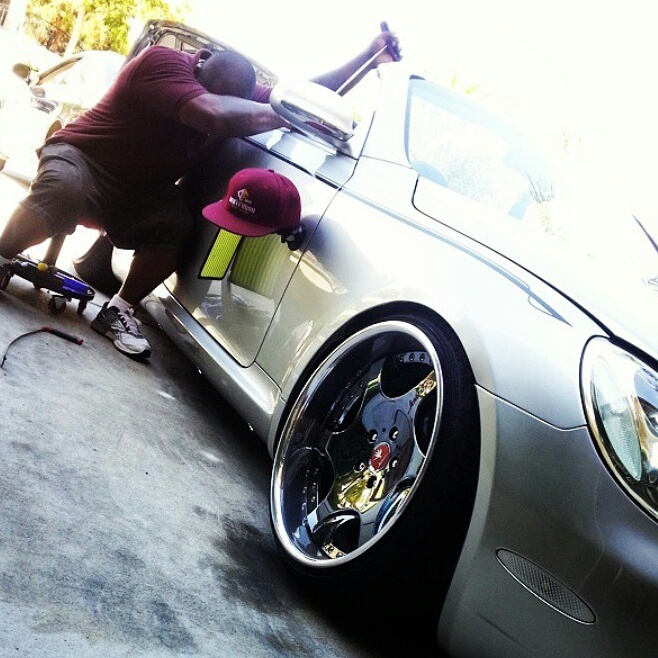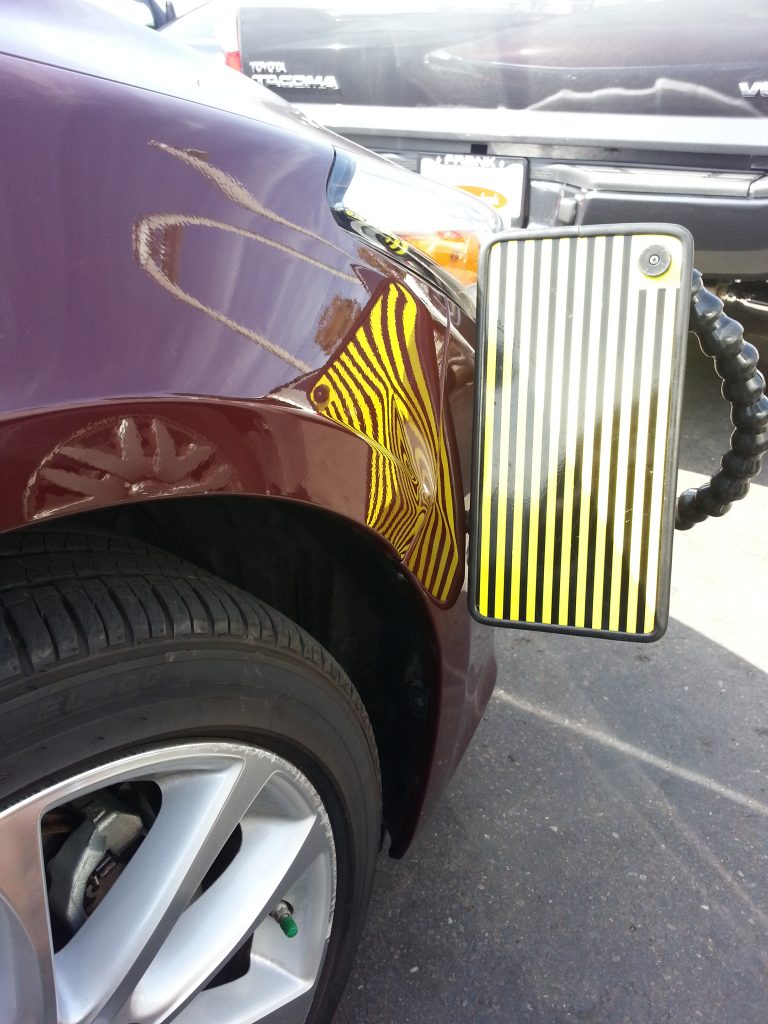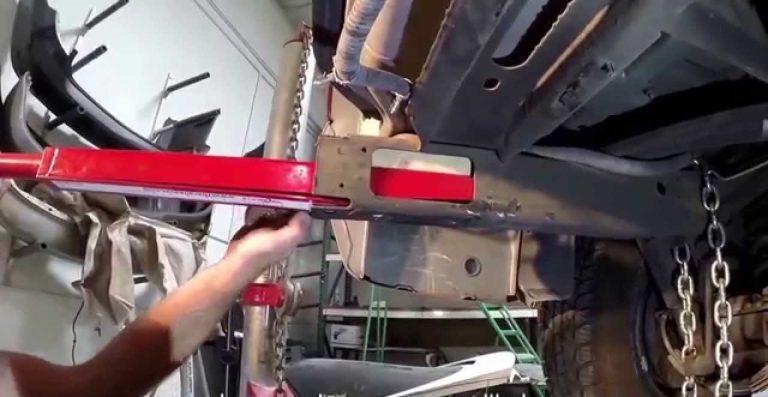PDR vs Body Shop
Imagine this; you finish your long day at work and you walk out to your car. The stress of the day is leaving you more as you take each step. You approach your car and you see an unusual reflection in the evening light. Upon closer inspection you see that someone gave your car a minor dent! This doesn’t have to be a situation where your stress levels rise! There are two good options for repair – a body shop, or a paintless dent repair process. What are the difference between these two choices? Which one should you choose?
A body shop may be the first place you think of calling.
As their name implies, they build their business around repairing and restoring the body of your car, and of course, this includes dents and other cosmetic issues. When a body shop repairs your dent, they usually take your car overnight, or mayabe even a little longer. This is because the process they would likely use can be time consuming.
First they will strip away the paint in the area of the dent. They do this by sanding away the top coat and paint. After this, they will fill the dent with a putty compound that will harden over night. This compound will completely fill the area where the dent is and provide some structural security. When the technicians return to work on your vehicle, they will sand away the excess dried putty so the shape of the dent filler will exactly match the former shape of your car. After this, the technician will apply primer to this area so that a new coat of paint will stick to the vehicle. The paint color is matched to your vehicle. While the disadvantages of this process include cost and time, the advantage of having the dented area structurally sound is very important to many people.
The second option is called Paintless Dent Repair.
This process is usually about as fast as an oil change. It is also inexpensive compared to a body shop, and has the added benefit of not requiring a paint matching process. You will drive your car up to a technician who will use some special tools to “pull” out the dent. The tools may look like little plungers, but they require training to use correctly. In fact, one of the disadvantages is that if it is not done properly, it could leave small impressions in your car – or it could even make the dent worse. These are rare cases, but they do happen occasionally.
For many, the advantage of an in and out process that is relatively inexpensive is worth the small risk. The additional disadvantage is that the location of the restored dent may have a little less structural integrity after the process (similar to how bending metal can make it flimsy). With this information, you can now make a decision by weighing the advantages and disadvantages of both services. Both are popular for different reasons, but now you can feel informed about which type of service to seek out for your dent repair.







